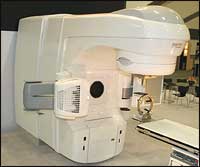 Hailed as a ‘second set of eyes,’ computer-assisted diagnosis hardware and software programs highlight suspicious projections on X-rays. But are radiologists saying ‘aye’?
Hailed as a ‘second set of eyes,’ computer-assisted diagnosis hardware and software programs highlight suspicious projections on X-rays. But are radiologists saying ‘aye’?
Another new set of initials is making the rounds in radiology: CAD. Also known as computer-aided detection and/or computer-assisted diagnosis, CAD is among the newest technologies aiming to help radiologists see more, see better, see earlier. (If, perchance, you were thinking of the other, ungentlemanly cad, you are reading the wrong publication.)
Considered a “companion technology” by its manufacturers, CAD hardware-software systems digitize film, use proprietary algorithms to read digital images, then deliver marked results to the radiologist to highlight areas the system considers suspicious.
Initially, CAD laid eyes on mammography. More recently, it’s set it sights on chest X-rays and CT scans.
Approximately 3 percent of the radiology administrators and business managers who responded last fall to Medical Imaging’s 2001 Readers’ Choice Awards survey put newcomer CAD on their equipment procurement wish list — no doubt encouraged by studies showing a 20.5 percent increase in breast-cancer detection rates with CAD, and clinical results indicating a 72 percent detection rate for early-stage lung cancer with CAD. The American Cancer Society is on record as saying that chest X-rays alone pick up only 15 percent of early-stage lung cancers.
Potential buyers will find their choices limited, but a few new systems are awaiting FDA approval. And even as new manufacturers prepare to break into the U.S. market, the industry continues to research CAD’s application in a growing number of directions.
Please refer to the February 2002 issue for the complete story. For information on article reprints, contact Martin St. Denis





